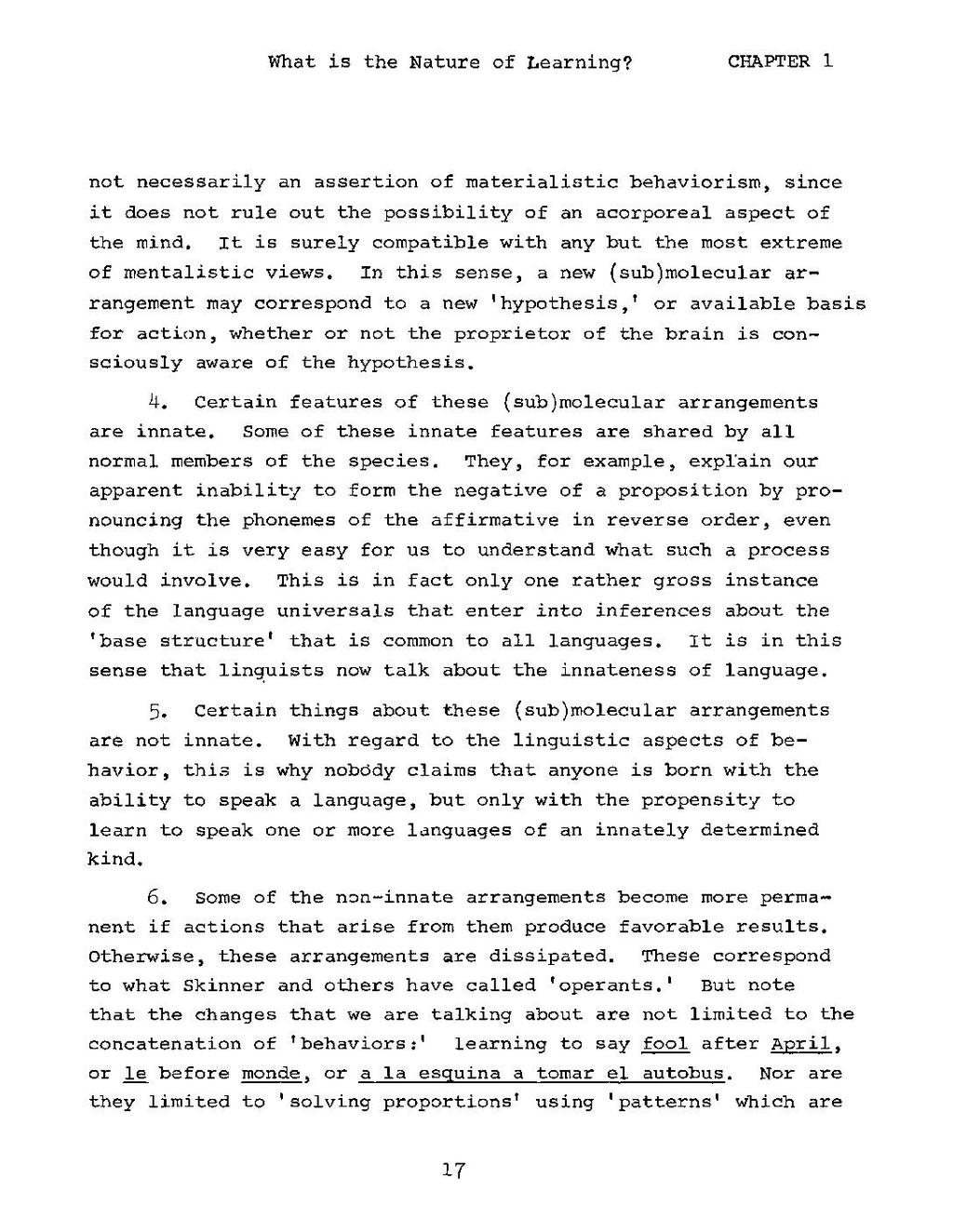not necessarily an assertion of materialistic behaviorism, since it does not rule out the possibility of an acorporeal aspect of the mind. It is surely compatible with any but the most extreme of mentalistic views. In this sense, a new (sub)molecular arrangement may correspond to a new 'hypothesis,' or available basis for action, whether or not the proprietor of the brain is consciously aware of the hypothesis.
4. Certain features of these (sub)molecular arrangements are innate. Some of these innate features are shared by all normal members of the species. They, for example, explain our apparent inability to form the negative of a proposition by pronouncing the phonemes of the affirmative in reverse order, even though it is very easy for us to understand what such a process would involve. This is in fact only one rather gross instance of the language universals that enter into inferences about the 'base structure' that is common to all languages. It is in this sense that linguists now talk about the innateness of language.
5. Certain things about these (sub)molecular arrangements are not innate. With regard to the linguistic aspects of behavior, this is why nobody claims that anyone is born with the ability to speak a language, but only with the propensity to learn to speak one or more languages of an innately determined kind.
6. Some of the non-innate arrangements become more permanent if actions that arise from them produce favorable results. Otherwise, these arrangements are dissipated. These correspond to what Skinner and others have called 'operants.' But note that the changes that we are talking about are not limited to the concatenation of 'behaviors:' learning to say fool after April, or le before monde, or a la esquina a tomar el autobus. Nor are they limited to 'solving proportions' using 'patterns' which are
17
